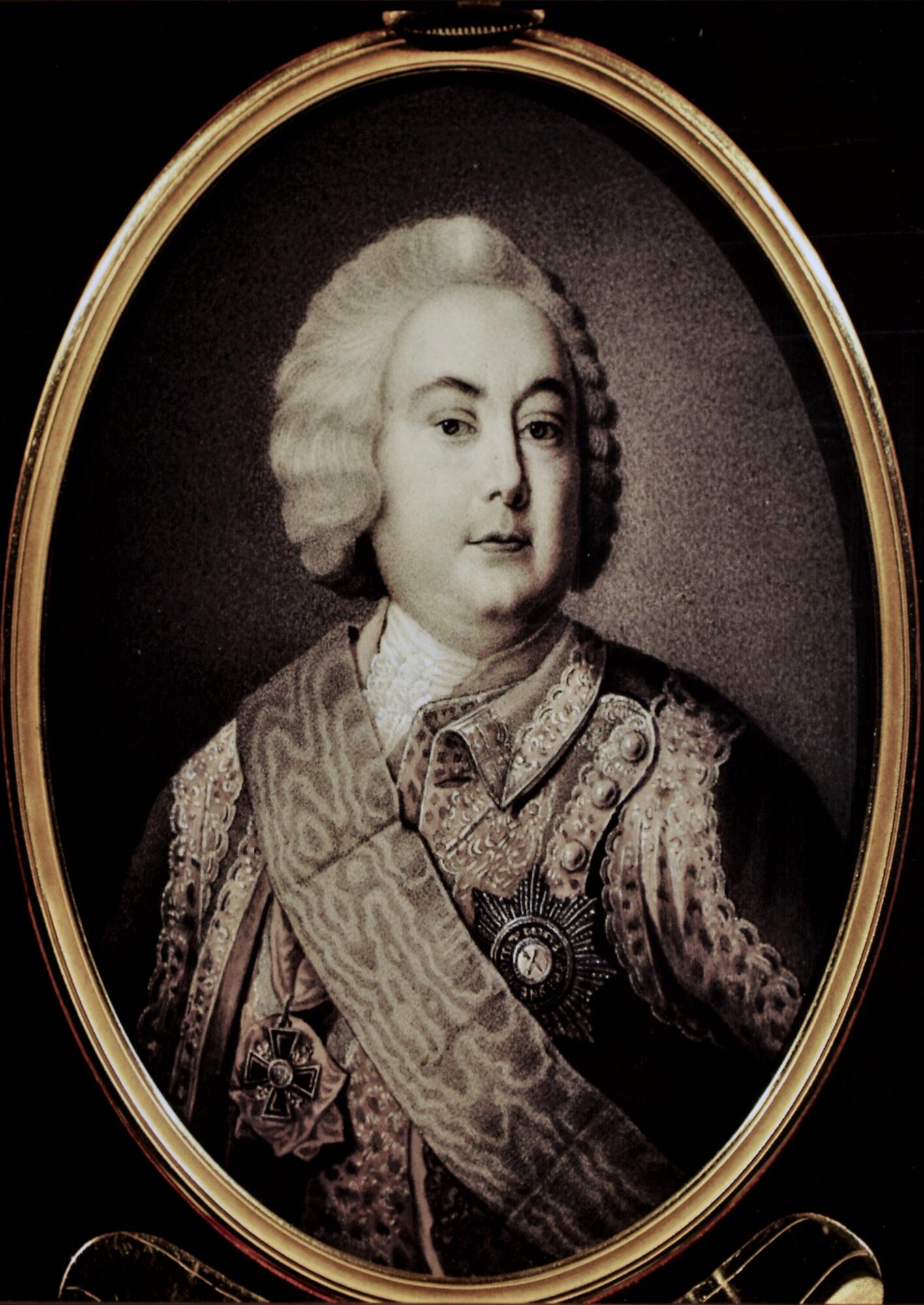The photocopy from the museum’s collection replicates a portrait of Boris Yusupov painted in the 19th century. It was created by the famous painter Aloysius Rokshtul, who also painted portraits of the imperial family.
At the age of 22, Boris Yusupov, together with twenty other young Russian boyars, left for France at the behest of Peter the Great. There, he studied at the School of Toulon Gardes de la Marine (Guards of the Navy). After returning to Russia, the young man became an associate of Peter the Great, and took an active part in his reforms.
His career was a dizzying one: in 1730, he became a full chamberlain, and 6 years later, he joined the Governing Senate. In 1737, Yusupov participated in a special general court to examine the guilt of Senator Dmitry Golitsyn, and another year later, he was appointed a vice-governor of Moscow. In this position he proposed an extensive plan of reforms in the Moscow Governorate. In 1740, the prince became a Privy Counselor and Moscow Governor.
His great-great-grandson Felix Yusupov wrote about him in his memoirs the following:
At the age of 22, Boris Yusupov, together with twenty other young Russian boyars, left for France at the behest of Peter the Great. There, he studied at the School of Toulon Gardes de la Marine (Guards of the Navy). After returning to Russia, the young man became an associate of Peter the Great, and took an active part in his reforms.
His career was a dizzying one: in 1730, he became a full chamberlain, and 6 years later, he joined the Governing Senate. In 1737, Yusupov participated in a special general court to examine the guilt of Senator Dmitry Golitsyn, and another year later, he was appointed a vice-governor of Moscow. In this position he proposed an extensive plan of reforms in the Moscow Governorate. In 1740, the prince became a Privy Counselor and Moscow Governor.
His great-great-grandson Felix Yusupov wrote about him in his memoirs the following:



